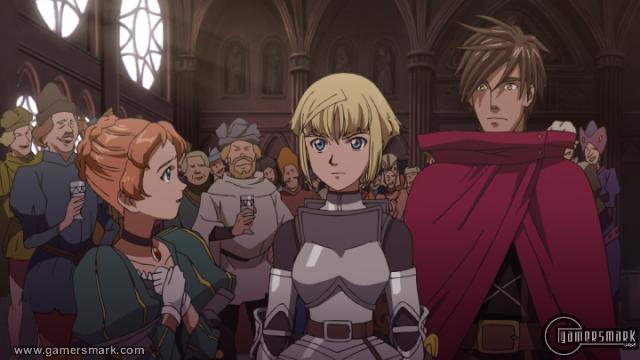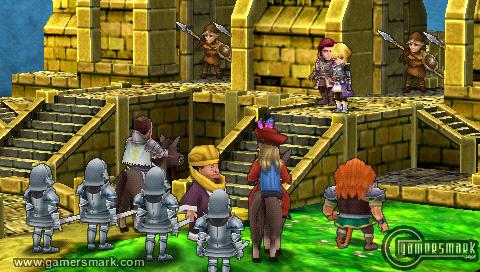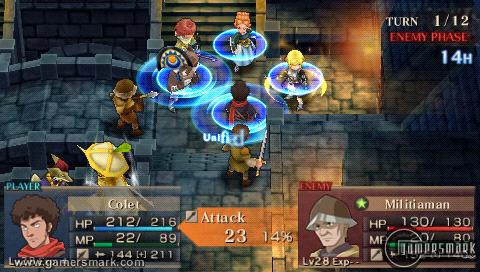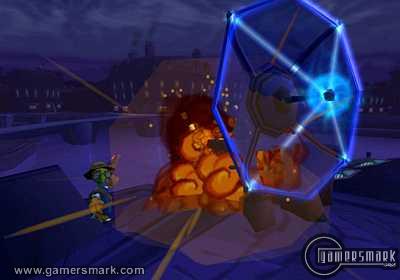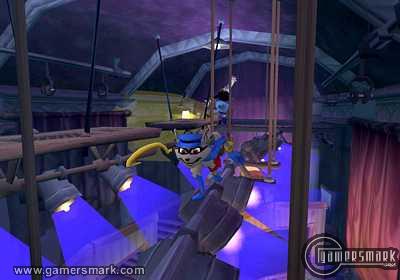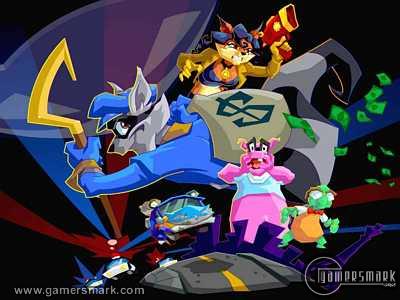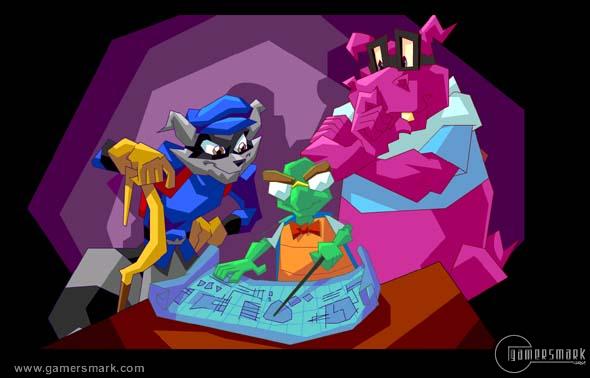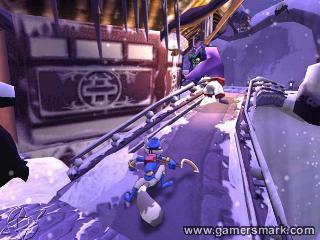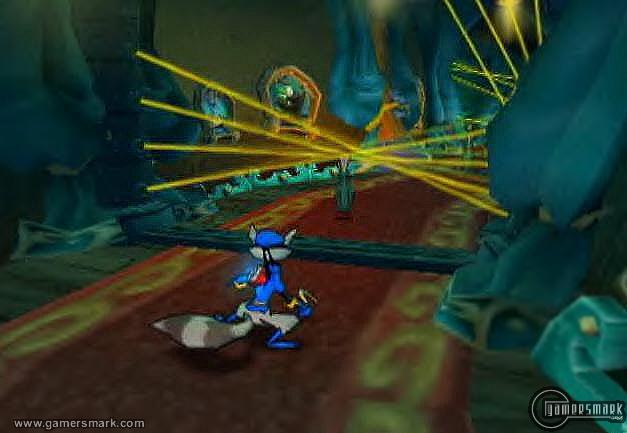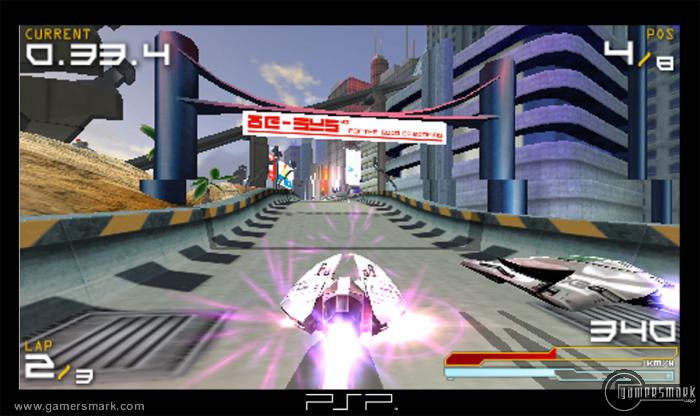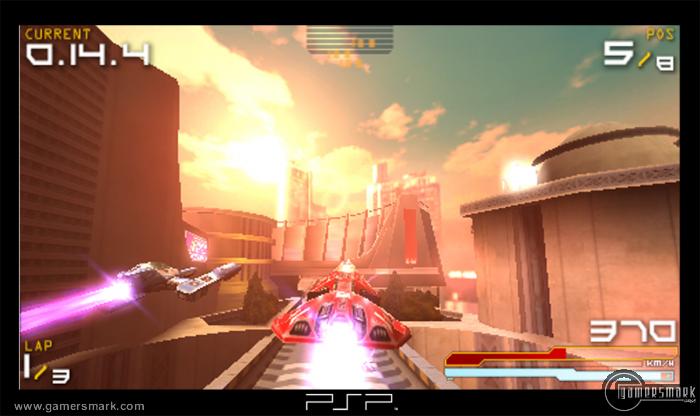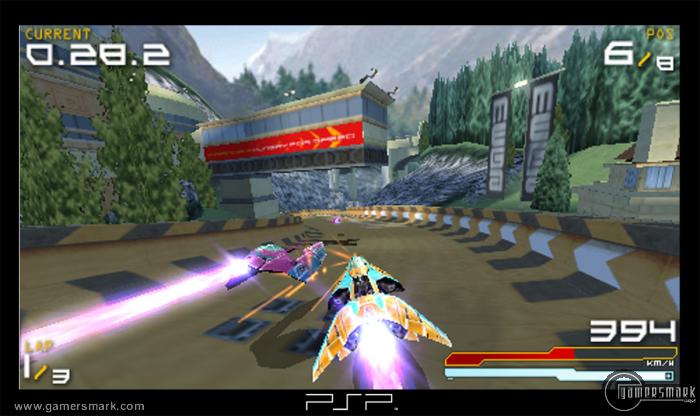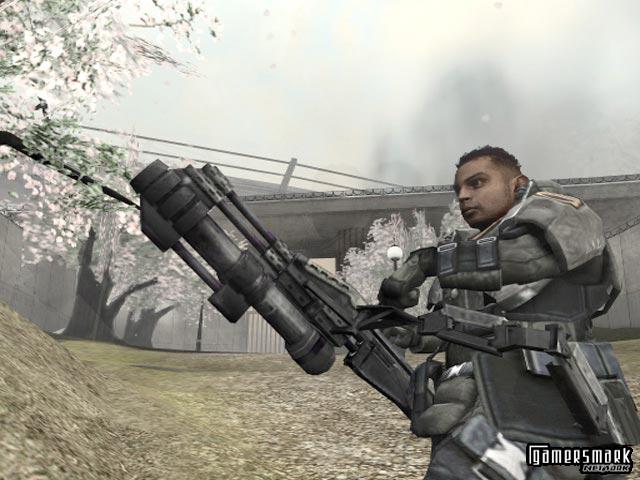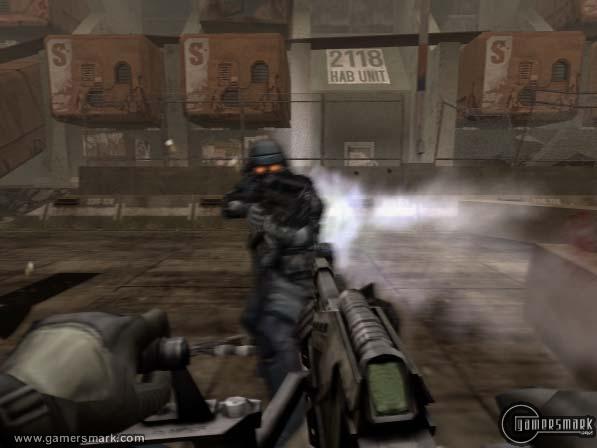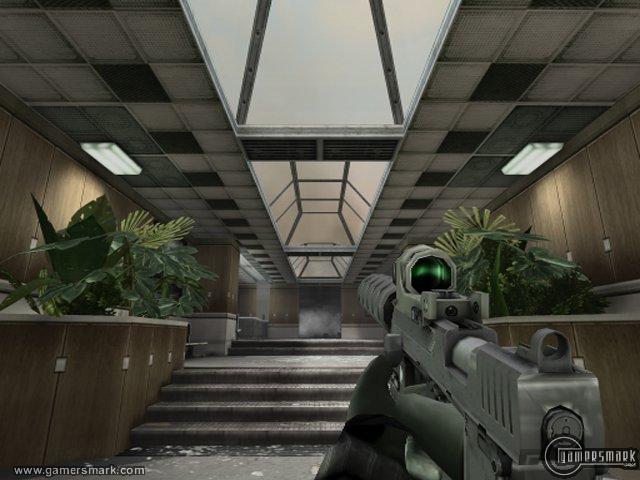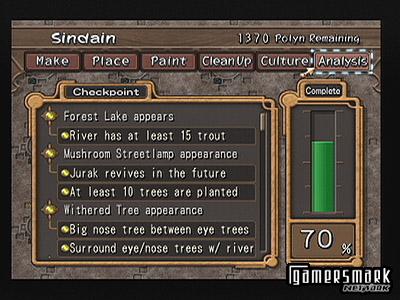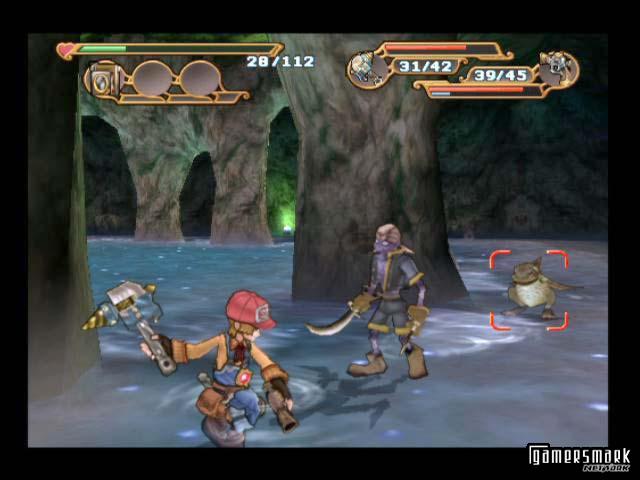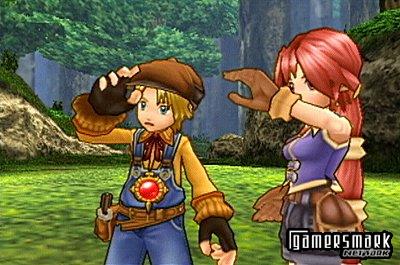Developer: Media.Vision Inc. | Publisher: Sony Computer Entertainment || Overall: 8/10
Wild Arms is one of the seemingly overlooked RPGs from the PlayStation-era. While some of the greatest Japanese RPGs to have been created were enjoying their prime, there were many B-tier RPGs that rode the coat tails to success as well. Wild Arms had given me that feeling upon first thought of the series, and while it may have been trying to copy what made the Final Fantasy series great, it brought its own flavor and methodology to the genre that holds up even into playing it in 2013.
Hunkering down and forcing yourself to play Wild Arms for the first PlayStation is probably going to be a difficult thing to do in a gaming landscape that we enjoy nowadays. Wild Arms essentially looks like a 2D Super Nintendo game. The battles are early-3D, which makes the age of the game immediately show. The art style tries to carry over into the 3D battles from the 2D field, but if the game wasn’t under seeming pressure to integrate 3D elements into the game I could have seen the battles working better as 2D, benefiting from keeping a consistent look throughout. Given that the game was released in 1996, it probably wowwed a few people at the time, and the 3D battles were probably one of the things that were marketed heavily to contrast away from the Super Nintendo and butt heads with the Nintendo 64 (which had just been released the same year).
The story in Wild Arms is pretty interesting, and the initial set up of the game is actually quite different than your usual RPG. The game revolves around three characters: Rudy, Jack, and Cecilia. Each of these characters are independently controlled and swapped to during play, so you have a somewhat decentralized feeling as to which character is actually “you.” The only character that is sort of implied to be the main character is Rudy, who is a (mostly) silent protagonist and holds a couple of terrible secrets that don’t really pay off very well in the end. Rudy is able to use weaponry known as ARMs, which are remnants of an old war that was fought against the Demons, which are the antagonists in the current events. Jack and his “assistant” talking mouse named Hampan are adventurers who join up with Rudy. Cecilia is a princess whose father dies as a result of the Demons attack early in the game, who ends up being the shaman savior of the world. These three characters have their independent storylines at the beginning of the game until they meet up and decide to adventure together. I wish the reasoning these guys got together was a little more profound, but it really wasn’t much more than saying “Hey, are you adventuring, too? Let’s go kill some shit.” Eventually the bonds between the characters are made and the group ends up being a great cast of friends. They all go through a bit of personal emotional turmoil together despite the larger story going on around them, and saving the world actually gets put on hold for their smaller stories at times, though they do end up being related to it in the end.
The story revolves around a conflict that arises from a group of Demons who find their way back to Filgaia, the planet that the Humans are living on, to either take it over and enslave Humanity — or destroy it. Filgaia has already been having a little bit of a problem with the planet dying and no one understanding why the life energy of the planet was being sucked out of it with no cure to be had. At the end of the last war, there was another race that shared Filgaia with the Humans, known as the Elws (Elves). After the last war they had sacrificed the world’s life energy to rid the invading Demons. As a result, the Elws and Humans had a falling out and soon all of the Elws “disappeared.” The Elws soon became only part of stories and besides a few remaining monuments and structures, had been gone for a very long time. The Elws were very good with technology and along with the Humans had created ARMs as well as huge machines called Golems. The Golems were tantamount in expelling the Demons and many had eventually been scattered and “lost” outside of a few that were kept around for show. There are also ethereal entities known as Guardians that watch over and protect Filgaia for some unexplained reason, and had been lying dormant in a weakened state due to the results of the last war.
The Demons themselves are not actually “demons” in the classic sense. They are essentially robot aliens from a planet called Hiades which is no longer habitable for them. Unfortunately not too much of their origin was explained by the end of the game, but they seem to be able to come back from Hell (wherever that is) a lot after they die. Wild Arms, surprisingly, has a lot to do with science fiction. The beginning of the game has more of a fantasy feeling until later where there is teleportation, dimensional traveling, super computers, and space travel. You get a little taste of the technology in the beginning of the game, but it doesn’t really come back around until later. For these reasons, Wild Arms sets itself away from “normal” fantasy RPGs because it seems to address the question of what stakes are involved in not only the survival of the planet, but what external threats are “out there” that could come at any time. If you take the time to read the extra informational books on the bookshelves throughout the game, you’ll find quite a bit of interesting lore regarding the previous wars, the Golems, the Demons, and the Elws. If you have any interest in the story, my suggestion is to make it a point to explore towns as much as you can and to read as much of the texts as possible. The lore is probably the most unique part of the game when all is said and done.
Unfortunately the story starts out VERY slow. I didn’t feel like the story got interesting at all until about 10 hours played, where the game is trying to slowly get you used to the gameplay mechanics and the feel of the dungeons. As the story ramps up, I found myself engrossed in the finer details, and while the game itself wasn’t that exciting, I wanted to know more and see more of what was happening to Filgaia and how the protagonists fit into the whole debacle.
There’s probably not much point in actually explaining the gameplay itself. It’s pretty standard as far as RPGs go from this era, and most of the time you’ll be mashing the X button and perhaps throwing some special abilities out to defeat the endless droves of enemies that you’ll be slaughtering. There are a couple of unique things about this game from a gameplay standpoint, however.
The dungeons themselves are designed around the use of a concept called “Tools.” For example, Rudy starts out with Bombs. He’ll use bombs to destroy obstacles, such as rock walls, boulders, etc. Most of the dungeons have some sort of elaborate puzzle-solving, and eventually each of your three characters will attain 4 tools each. Most of the game will be played with only about two useful tools, and some of the other tools are only used situationally a couple of times after you get it and then not again. The Roller Skates and Power Glove were used probably three or four times outside of the dungeon you actually get it in, for example. In contrast, most Final Fantasy games don’t really have you do too much with the field (aka the dungeons), leaving most of the challenges to be navigating through mazes or maybe flicking some switches, which Wild Arms has as well.
The battle gameplay is a bit forward-thinking for a game from this era and this genre. Possibly the most interesting is that they let you swap out equipment in-battle without any penalty, which opens up the use of more items during the battle and being able to adapt to the challenge WHILE you are facing it rather than getting ready for it or dying and then knowing what to do. There are also auto-battle stances according to whatever behavior you want your characters to adhere to, and they are independently adjusted — meaning you can manually control one, and leave the other two on auto-battle. This can also be adjusted in battle, which is very convenient in case the auto-battle isn’t working out. As you grind a lot of mobs to get through some of the dungeons, it can save a lot of button mashing.
Another cool thing about the game as a whole is that they only give you three characters. As opposed to other games where you can get around ten characters, this allows the game to focus on the characters you have. You will always use “all” of your party members in every fight, giving you the feeling that all of your party members are taking the burden of the challenges on their shoulders alone and they don’t miss out on any vital events that happen in the game, like beating a difficult boss. There are also liberties taken with this as well, as there are a few dungeons where you will control only one character at a time, and you have to use the other characters to help yourself in another part of the dungeon until you all meet up again. Tools are also attached to certain characters, so you will constantly be switching between characters to use the different tools — which allows you to control them in the field in an equal amount compared to the other characters, again resulting in a feeling that your party members are “all” there at the same time, and not waiting somewhere drinking coffee while you’re out saving the world.
A lot of the boss battles are easy — they’re not too complicated or grueling. Since I didn’t want to spend 60 hours on the game, I was using a walkthrough for the majority of the game, but whenever I hit a boss battle I wouldn’t usually read anything about the boss before going into it. I ended up spending about 35 hours (which literally took me 8.5 months to play) on the game and accomplished a majority of the optional bosses and activities the game offered. While there are definitely hard battles to be had, the battle system isn’t necessarily too enthralling or deep.
Each of your characters have a unique group of spells/abilities that they have access to. They use MP (magic points) or ammo, and most of the time you’ll be using them instead of the normal attacks the game allows you to use. One thing that struck me as an odd decision was that Rudy, the character who is able to use the “ARMs,” notated in the game’s title, didn’t use ARMs as his normal attack. He has a sword… The ARMs were “special” abilities. In fact, ARMs themselves don’t really play that much of a huge part of the game since only one character uses them. The game could have been called Wild Magic or Wild Fast Draw and the same result would have been seen in the game. Rudy doesn’t use his special ability to solve anything other than lay the smack down on anything and everything you saw fit to use them on. It was a missed opportunity to distinguish Rudy apart from Jack, who is an “experienced” swordsman, but for some reason Rudy used a sword, too, and not a gun to blow shit up with all the time. I suppose that you could use his ARMs all of the time and never use his sword attack, but you usually want to keep “special” abilities for bosses or harder enemies. That’s what makes them special.
Character progression isn’t all that exciting, but each character is different from each other. Rudy will acquire new ARMs occasionally through play. You can spend straight money to upgrade these ARMs to make them more powerful and useful. You get nearly ten of these ARMs, and the last two are found in the last string of dungeons. Unless you make it a point to exit the dungeon and go upgrade these, they are pretty much useless since when you find any ARM they are basically crap. Jack is an expert swordsman with a mysterious past, so he gets “Fast Draw” hints — the name of his school of abilities is “Fast Draw.” When you acquire a hint, you have to use the ???? ability you have just acquired until you are able to “learn” the ability that you had been given the hint for, at which point you can then use the ability when you like. Cecilia uses all sorts of magic, and you can learn more by acquiring items known as Crest Graphs. You use the Crest Graphs to bind spells to the character. The choices you make at the beginning of the game are more important when you have almost no Crest Graphs, but as you find more, the decisions become less important. There will eventually be an “Advanced” set of magic, which will sort of reset the importance of Crest Graphs about 2/3s of the game in, but since you can unlearn and relearn abilities with absolutely no penalty, it is easy to just “upgrade” all of your Basic magic spells into Advanced spells.
All of the characters have something called Force abilities. Each turn in battle gives them a certain amount of “Force.” Each character has four different abilities that they can use according to their current Force level, and they use Force to use them. These are especially useful when summoning Guardians or amplifying special abilities during longer fights.
Once you get to the later part of the game, there are a few optional quests and bosses to do, which can fill up about 5 to 10 hours. There is an arena which gives you very special items depending on which fight you fight up to. The items you earn here basically let you “cheat” and build out your characters into ridiculously strong killing machines, if you were so inclined to do so. I passed over a couple of optional bosses, and most of the optional bosses will drop best-in-slot gear for your characters, making them even better.
Something to note, I played the majority of the game without a map. I was wondering why they didn’t give us a map for the whole game and how stupid it was that there wasn’t one in the game. I looked it up online eventually and it ended up being that I missed a room where I should have blown the wall apart — IN THE FIRST DUNGEON — and inside that room was the map. I was making the game way more frustrating for myself than I had to. Which basically ends with me saying that a map should not be something you find in a game in a hidden room optionally. It has to be a forced thing you find, are given, or just friggin happens in the game. BAD GAME DESIGN!
That’s basically Wild Arms. It’s not an overly ambitious game, but if I was playing it in middle school alongside Final Fantasy VII, I’d probably would have still enjoyed the game quite a bit. I didn’t actually have a PlayStation until closer to the year 2000 or so, so it was completely off my radar until I started collecting more games later in middle school and high school. I didn’t actually acquire the Wild Arms games until I was in college, though.
All in all, the things I take away from this game are the great story, and the great character relations that are built through the events of the game. If you’re able to sit through and play old PlayStation games, it is definitely worth playing. Unfortunately Wild Arms 2 appears to have an all new, yet seemingly familiar-looking, cast of characters, so the stories of Rudy, Jack, and Cecilia are left to fanfiction.
Since I’ve actually beaten the game, I have the following to say about the story:
*Story SPOILERS past this point. Beware!*
The story ends with the moral that “Humans are the true Guardians of Filgaia” — not the spiritual entities that are actually known as the Guardians, since now they’re dead or whatever. Obviously this is a big comparison to what we as humans on the planet Earth are to our own planet. The story is essentially telling us that we have the power to protect our world and to defend it from bad stuff, yadda yadda yadda. It’s a good message, although a bit cheesy in its delivery since they literally state the facts (just in case you weren’t able to pick up on that from the 35+ hour journey you just went on).
A few things about the story just plain don’t pay off, and it kind of makes me sad, since there definitely could have been more room to explain some of the things they didn’t delve into:
– The Demon race’s history wasn’t explained, other than that they are evil and are taking over planets. Were they created from something or what? What was their fascination with Filgaia over other planets in the universe?
– “Mother,” who is the supposed leader of the Demons is apparently some sort of a parasite and NOT a mechanical robot like the other Demons. She apparently needs to incubate for long periods of time. It begs the question of what she actually is, and where she came from. Closely related, where is “Hell” in this universe? Is it another dimension? They have several Demons who die but come back from “Hell” to fight you again but in a more powerful form. Zeikfreid, who is the last boss of the game comes back to life for a THIRD time at this point, but that time he is all mangled yet is even more “powerful” than ever before. The only reason he probably didn’t go to Hell the last time was because we were fighting in a wormhole, and he was talking about some nonsense about it being unstable to fight in the middle of the space travel teleporting dimension thing.
– Rudy being a Demon himself raised by a human, he was able to feel pain and compassion. However, Rudy being a Demon didn’t really do anything in the end. He didn’t have to choose a side between being Human or being a Demon. All it did was serve for an explanation as to why people had always wanted to ostracize him, even though they didn’t actually know he was a Demon. The only reason they actually ostracized him was because of his use of ARMs earlier in the story. His use of ARMs and his “Demonhood” didn’t actually play a huge part in the ending of the story. It did serve to characterize him and make him standout during the course of the story, but it was a set up with no pay off, other than giving a reason to have his arm torn off completely and then repaired at a later time.
– The Elws all transported to a different dimension and remain there, and they don’t give a shit about Filgaia anymore. Their story doesn’t seem to be resolved at all, and it sort of makes me question why they were even written into the current events of the story other than to just have them there. The only profound thing they did was repair Rudy’s arm when it was ripped off during one of the fights with Zeikfreid, but they are never talked about again. They don’t even help during the last battle or help Filgaia in the restoration process or anything. The Guardian Blade which caused Filgaia’s weakened condition is still in the alternate dimension and you never actually acquire it for use. Another set up with no pay off, as far as I’m concerned — excuse me sir, but I’d like to use the ultra powerful sword, please!
– Jack’s love interest, Elmina, is nowhere to be found after she is saved in the quest in Arctica Castle. I would have liked to see something else from that plot point to close it out, other than the fact that “she will forget everything, even Jack.” It would have been nice to at least have seen Elmina living in the world somewhere so that you KNOW that what you went through to save her paid off, but I don’t think you can even find her in the world. If you have a chance, definitely don’t forget to watch the “hidden” backstory about Jack and Elmina and what happened to Arctica Castle by remaining idle on the Start Screen. It is quite riveting, and I had only found out about that scene after Elmina’s ultimate resolution in the game.
– I can appreciate the fact that the group “goes on more adventures” at the end of it all and you can kind of tell that the story has come to an end, but I have to wonder what the hell they’re doing. As far as I can tell, the main conflict that was presenting itself to Filgaia was… solved. They said that there are “still monsters out there” so it is kind of weird to think that all they’re going to do now is slaughter tons of monsters that are just living out in the world minding their own business. It would have made more sense if Wild ARMs 2 was actually about them… but it isn’t. I would have enjoyed seeing more adventures with these three characters, but unfortunately it’ll never happen.
– There is an interesting nod to breaking the fourth wall at the end of the game. Where they are saying that they weren’t the only ones to have saved the world, they start naming off different characters from the game… whom we didn’t actually see any of those characters during the “celebration” scenes, unfortunately. At the end of their list, they say something to the effect of “and one more person…” and then trail off awkwardly. They then turn toward the camera and stare at “you” as if to “thank” you for helping them through their journey as the camera pans up into the sky and focuses on the sun. The fourth wall acknowledgement sort of caught me off guard, and I didn’t realize it until the awkward end of dialogue and the tilt up to the sky. Unless you were reading every single word they were saying it might have been easy to miss, especially since the text automatically scrolls and you can’t read it at your own pace. It is interesting when a game does something like this, and the feeling I got from it, especially from the camera staying on the sky until it faded out, was that you are some sort of “all-powerful being” in this universe watching over them and helping them through their journey. After being invested in the story and the characters, it’s a charming acknowledgement and it almost makes you feel like you yourself are “part of the gang” instead of being “in the shoes” of one of the characters you were controlling — this is a very different feeling a game tries to give you when all is said and done. It was definitely my first time experiencing something like this.
There is a remake of Wild ARMs called Wild ARMs: Alter Code F which is a direct remake of the first game and refines the gameplay and retells the story in a more cinematic fashion on the PlayStation 2. I hope that I can play it one day, but it appears to be a $90+ expense to do so.




